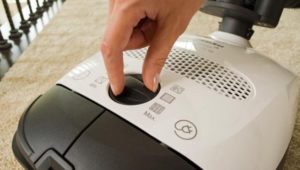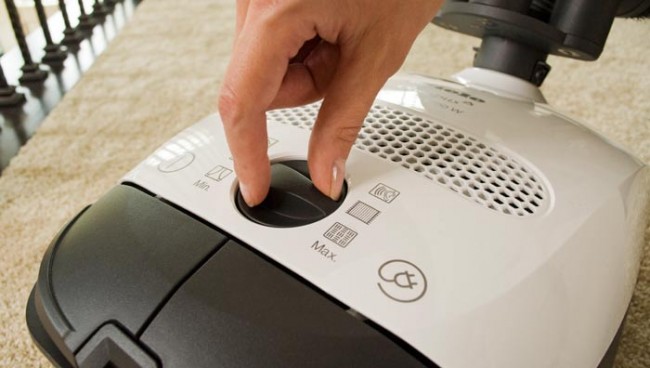
Here’s the bad news: the Miele Classic C1 Olympus was recently discontinued. Here’s the good news: it’s still one of the best vacuums on the market, and it’s still going to carry full warranty support and a range of interchangeable parts with current Mieles. To put it bluntly, if you’d like a Miele canister but don’t feel like spending money on C3 canisters (whose cheapest members, the Alize and Calima, start at around $650) and don’t trust the Compact C2 Electro+, which isn’t much cheaper at $650, the Olympus is about as good as it gets. Of course, you could also look into the new Compact C1 Turbo and Compact C1 Pure Suction, which cost around $400 and $300 respectively. But do any of these canisters provide more value per dollar than the humble Olympus? We set out to find out while answering other frequently asked questions about the Olympus. Read on to make our knowledge yours.
Do you need to buy dust bags and filters for the Olympus, or are they already included? Also, when do you change them?
You don’t need to buy dust bags, a starter air filter, or motor filter with your Olympus, but you’ll need to change them and buy refills on your own. All Classic C1 canisters, including the Olympus, use GN-sized dust bags; this means the Miele GN Airclean 3D Efficiency Dust Bag. Each box ships with four dust bags, a motor filter, and an air filter. Change the bags when they’re full and change the motor filter with each box. Don’t use the cheap air filter; buy the Miele HEPA AirClean SF-HA 50 instead. It includes HEPA filtration and lasts for 50 hours of vacuuming, or 12 months of domestic use. Buy several bags and filters at once so you aren’t stuck waiting for them to ship when you run out.
How does the Olympus compare to the Capri , Delphi, and Titan in the Classic C1 line for carpets and hardwood floors?
The Olympus is the cheapest Classic C1, and as a result, has the poorest cleaning power. The vacuum itself is just as powerful as the Capri, Delphi, or even the Titan, but it’s hobbled by a combination brush head that’s decent on bare floors but useless on any kind of carpet, even low-pile carpeting. The Capri swaps the combination head for a turbo brush head, allowing it to handle low- and medium-pile carpets, and a Parquet head, allowing it to do a much better job caring for hardwood floors. The Delphi gets rid of the Parquet head and swaps the turbo head for an electric brush head, which works on bare floors almost as well as the Parquet head while doing a better job on low- and medium-pile carpets as the turbo head. The Titan, of course, includes both a Parquet and electrobrush head.
Is the Electro+ worth the extra $200-ish over the Olympus?
The answer to this question depends entirely on your carpeting and flooring environment. If you have no carpets whatsoever and only have hardwood, tile, or concrete flooring, the Olympus will do a perfectly acceptable job. However, if you’ve got low-pile, medium-pile, or high-pile carpeting, the Electro+, which includes an updated electric brush head, will be a much better choice for your home or apartment than the Olympus. Even if you simply have a lot of hardwood flooring that you want to keep in good condition, we’d still recommend the Electro+ over the Olympus, as the Parquet head will do a better job than the combination head. While you can buy the Parquet head separately, by the time you do, you’ll already be most of the way to the cost of the Electro+, which will not only give you the Parquet head, but will also add the electrobrush.
Which is the best value, the Olympus, the Turbo, or the Pure Suction?
We’ve compared the Olympus to the Pure Suction here and here and found it in both cases to be the better of the two vacuums. The Pure Suction, like the Olympus, is hobbled by a combination floor head that’s really only good for bare flooring. However, unlike the Olympus, the Pure Suction is smaller with a smaller capacity and is made in China instead of Germany, reflecting Miele’s desire to cut costs at the expense of fair labor wages and, quite possibly, quality control. Quite simply, we trust the Olympus more than the Pure Suction. The Turbo is a better deal than both of them if you want to clean carpeting, as it includes a turbo brush. It also includes a Parquet head, which will let you clean hardwood floors more effectively as well. The downsides are its smaller cleaning capacity due to the smaller body size as well as its manufacturing in China over Germany. If neither element bothers you, choose the Turbo. If you’d like the Parquet and turbo brush heads in a full-sized, made-in-Germany package, the Classic C1 Capri will fit your needs perfectly.
Are the C3 Alize and Calima that much better than the Olympus?
Between the Olympus, Alize, and Calima, we’d recommend the Calima as the best all-rounder of the three; it not only includes the newest Miele canister improvements (e.g., the sealed system for families with allergies), it also includes a newer turbo brush and a Parquet head as well as a much larger working radius (36 feet vs 29.5 feet). The Alize includes the standard C3 canister improvements as well as some features only found on $1,000 Mieles like the Marin and the Brilliant, but it’s also hobbled by a combination brush head (albeit a newer one). If you have carpeting, unless you’re willing to buy a turbo brush head for the Alize or Olympus, you’ll want to choose the Calima.
![]() You can buy the Miele Classic C1 Olympus here on Amazon. For the best combination of brush heads, price, and manufacturing quality, we’d recommend the C1 Capri, C1 Delphi, or the C3 Calima instead.
You can buy the Miele Classic C1 Olympus here on Amazon. For the best combination of brush heads, price, and manufacturing quality, we’d recommend the C1 Capri, C1 Delphi, or the C3 Calima instead.
![]() Canadians can buy the Titan here, the Capri here, or the C3 Calima here; unfortunately, the Delphi and Olympus are no longer available.
Canadians can buy the Titan here, the Capri here, or the C3 Calima here; unfortunately, the Delphi and Olympus are no longer available.
 If you find our research on PMC helpful, you can follow our efforts to keep maniacally reviewing home cleaning tools by shopping through our links above. We promise to keep fighting the good fight against every horror children, animals, and grown, yet messy humans can inflict upon a clean home.
If you find our research on PMC helpful, you can follow our efforts to keep maniacally reviewing home cleaning tools by shopping through our links above. We promise to keep fighting the good fight against every horror children, animals, and grown, yet messy humans can inflict upon a clean home.

